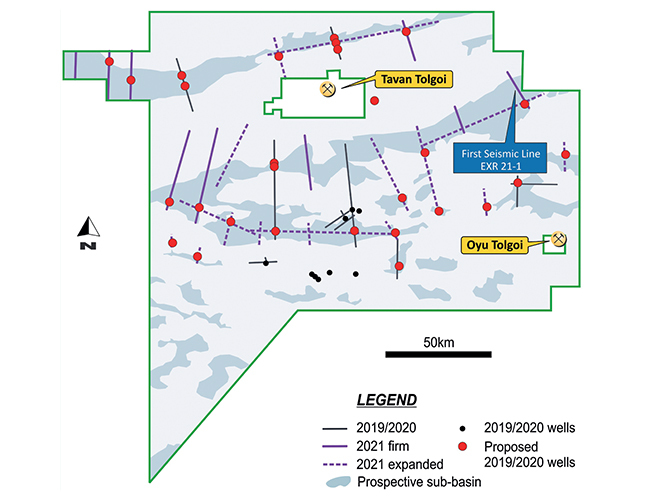Mongollia is one of the fastest developing nations in the world, with vast mineral and metals reserves, but also the potential to become a major gas exporter. Almost two decades on from the great Mongolian coal rush, the country could be looking to gas as its next big economic opportunity, and Elixir Energy is pioneering the way.
Australian headquartered Elixir Energy (ASX:EXR) is a junior gas explorer with a portfolio boasting 7 million acres in Southern Mongolia, just north of China's border. China, is of course, one of the biggest consumers of natural gas in the world and its demand is rapidly growing.
Elixir Energy's project is called Nomgon and has been independently certified to contain a giant coal seam gas prospective resource of 14.6 trillion cubic feet on a best case basis.
A production sharing contract (PSC) was signed between Elixir Energy and the Mineral Resources and Petroleum Authority of allowing the Australian company to forge ahead with its exploration plans.
Elixir Energy made Mongolia's first-ever coal seam gas discovery at its Nomgon-1 exploration well last year. Since then, the ASX small cap has been working quickly to firm up its resources in the region.
It has now drilled about a dozen wells, nearly all of which have encountered coal.
"This is our third year of exploration following the initial discovery. We followed up a number of successful wells thereafter," Elixir Energy managing director Neil Young said. "The successful results have seen us expand our exploration and appraisal plans."
It is now looking to drill about 30 wells over this year and next.
Elixir Energy recently booked its first contingent prospective resource booking over just 2% of its acreage, which according to independent experts holds 60 billion cubic feet of gas in place and 24Bcf of recoverable gas, on a 2C basis.

This is more than enough gas to provide feedstock for a small power plant. And it could not come at a better time.
Mongolia is currently looking to retire its 30 year old coal fi red power plants in the coming years, leaving questions of where to fi nd new capacity to supply its national electricity grid.
Natural gas is seen as an obvious solution. It is a much cleaner alternative to Mongolia's fl eet of coal stations, and in a world transitioning to a lower-carbon future, could be an ideal replacement.
Elixir Energy has moved quickly to plan out a gas fi red power generation project and has the Mongolian government's keen support for a new power station.
The power station would use coal seam gas from Elixir Energy's PSC and would be constructed in stages. Initially the power station would have a capacity of 10 megawatts, but then be expanded into a larger capacity project.
Elixir Energy has contracted engineering firm Clarke Energy to undertake a feasibility study on the proposed power station.
While the power station project is expected to be the fi rst step of commercialising Elixir Energy's initial gas discovery, the company has several other pathways to get its gas to market.
Currently, Russian giant Gazprom is planning a gas pipeline to transport gas from Russia to China via Mongolia. While it is early days, Elixir Energy notes the pipeline will pass close to its acreage and could very well tap into the pipeline to send its own resources to gas hungry China.
China's gas demand is expected to more than double by 2040 as it seeks to diversify its energy sources.
The minerals and metals boom of the last two decades in Mongolia also offer opportunities.
Miners throughout the region are looking to decarbonise their operations. One option available to them is replacing diesel trucking fleets with liquifi ed natural gas (LNG) or compressed natural gas (CNG).
In June last year, Elixir announced plans to build a small LNG plant which would supply coal truck fl eets, replacing current diesel fuelled vehicles. It has already signed a memorandum of understanding with MT Group for LNG offtake.
Rio Tinto is mining one of the largest known copper and gold deposits in the world. The projects, called Oyu Tolgio and the operator touts it as one of the most "modern and sustainable" operations. Other miners in the region truck coal from mine sites across the border to China.
While Elixir Energy is looking to fi rm up its gas reserves, and ultimately head towards what could be a massive coal seam gas development, the company is also investigating future hydrogen and renewable opportunities across its landholding.
It imported technology called a SODAR which measures wind and solar resources.
"The skill sets we've got, and position of the company, places us well to look at the energy transition. Gas is a key platform over the next few decades, but renewables and hydrogen are ultimately going to be part of the plan," Young said.
"It's longer term, but in terms of the economics of producing hydrogen for steel mills in China, our project is very well located." To aid its drilling program and future development, Elixir Energy recently initiated a capital raise, with sophisticated investors providing $10 million towards expanding the Nomgon exploration project.
A further $17 million worth of shares were issued to retail investors via a share purchase plan.

























